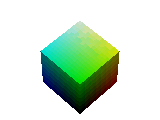» Image Restoration
Image inpainting has become an active research topic in image processing field. It is not only the action of editing images but also a powerful technique for automatically restoring or removing undesired objects so that the output images are adapted to their future usage to the viewer.
Image inpainting, also known as blind image completion, refers to the process of restoring damaged regions or filling in missing information in images. This completion is performed blindly without any cue from the original content of the images.
This kind of task has been initiated by experts and professional artists in museums to restore manually the old pictures or paintings.
Image inpainting, also known as blind image completion, refers to the process of restoring damaged regions or filling in missing information in images. This completion is performed blindly without any cue from the original content of the images.
This kind of task has been initiated by experts and professional artists in museums to restore manually the old pictures or paintings.

» Image Quality Assessment
Digital images are subject to a wide variety of distortions during acquisition, processing, compression, storage, transmission and reproduction, any of which may result in a degradation of visual quality. For applications in which images are ultimately to be viewed by human beings, the only “correct” method of quantifying visual image quality is through subjective evaluation.
The goal of research in objective image quality assessment is to develop quantitative measures that can automatically predict perceived image quality.

» Color management
In digital imaging systems, color management is the controlled conversion between the color representations of various devices, such as image scanners, digital cameras, monitors, TV screens, film printers, computer printers, offset presses, and corresponding media.
The primary goal of color management is to obtain a good match across color devices; for example, the colors of one frame of a video should appear the same on a computer LCD monitor, on a plasma TV screen, and as a printed poster. Color management helps to achieve the same appearance on all of these devices, provided the devices are capable of delivering the needed color intensities.
The primary goal of color management is to obtain a good match across color devices; for example, the colors of one frame of a video should appear the same on a computer LCD monitor, on a plasma TV screen, and as a printed poster. Color management helps to achieve the same appearance on all of these devices, provided the devices are capable of delivering the needed color intensities.







